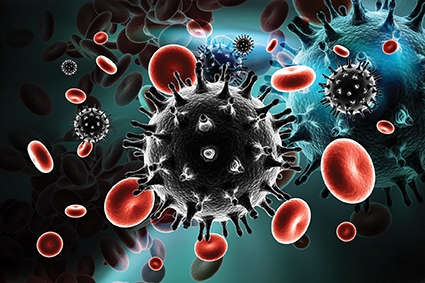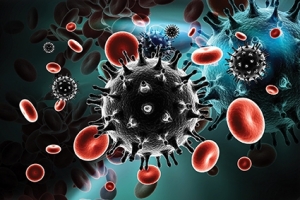As Russian Population is Set to Decrease, HIV Cases Increase
Last year, Russia’s AIDS epidemic reached a dangerous level, with the threshold of registered HIV-positive people hitting the 1 million mark. It was even reported that the real numbers could be even higher, as many people tend not divulge their problem. Thus, the number could be some 1.5 million, or almost 1% of the Russian population.
Drug use is no longer the main cause of growing HIV rates in Russia and the disease is now increasingly being spread via sexual contact. If earlier the majority of HIV patients were lone drug users, these days it’s mainly entrepreneurs, workers, housewives, students or the most active part of the population.
Although the spread of HIV has been decreased even in African countries, in Russia the rate of HIV infections is actually rising with each year. Since 1987, when it was first recorded in the Soviet Union, 204,000 people have died of HIV in Russia. The fall of the Soviet Union in 1991 and relative openness of borders particularly through the Central Asian region made heroin and other injectable drugs easily accessible to Russians. In the late 1990s and onward, through trafficking routes from Afghanistan, infection rates across Russia steadily rose.
There are numerous reasons why the Russian government is not as successful as other states are in battling the problem.
Central to HIV is the use of opioid substitution therapy (OST), which replaces intravenous drug usage with an opioid-based oral medication. This medication could be both methadone or buprenorphine which are prescribed by a physician. Through the use of OST, it has been shown that drug addicts are enjoying a more stable life, thereby reducing the transmission of HIV.
Needle exchange programs, which are another way to decrease HIV transmission and save lives in programs across the world, have been largely neglected in Russia.
The difficulty of the situation in Russia is quite surprising, as almost all of Russia’s neighbors have seen tangible progress in reducing HIV transmission. For example, China and Iran have established methadone maintenance programs.
Russia has also lagged significantly behind what other countries usually spend on similar problems. For instance, in its most recent move, the Russian government budgeted just $297 mln. for the treatment of AIDS-infected people. Unfortunately, this only allows for the proper treatment of up to 300,000 people or maximum 1/3 of the entire pool. Moreover, there will be no funding increase for that purpose until 2019, which could only further aggravate the situation.
Some moves are being made, however. In September 2016, Russian healthcare officials announced they would be replacing foreign HIV medication with drugs produced in Russia. Many think locally-produced medical solutions are not of the same quality and will only create more difficulties. Others disagree. Whatever the result, the tendency is that treatment is not available to everyone in need. Drugs are not accessible in remote towns of Russia and if a person in one of Russian provinces currently lives in Moscow, they will be expected to go to their local doctor to receive medicines.
Aggravating Russia’s Stance as a Global Power
A high spread of HIV has a direct link to the power of the State. More than one million people infected means that almost every 140th person in Russia is struck with the infection. According to some statistics, these are the people which are in their most capable period of life: the 18-50 age. Considering the poor healthcare conditions, their prospects are not bright, further limiting the workforce of Russia.
And this goes hand-in-hand with the general trend in Russia of a gradually decreasing Russian population. Various statistics, including those published by the United Nations, claim the Russian population is set to decrease by 2050 by 10-15 million people. High mortality among HIV-infected people will complicate the situation. The population decrease could influence how Russia manages to project its power beyond its borders in future. It is true that a population decrease is a widely-observable trend not limited to the former Soviet space. Even in Poland and Germany similar problems do exist. But while European countries invest more in technologies developing the telerobotic sphere in order to uphold industrial growth, Russia lags.
A less competitive economy with a lower population would inevitably have an impact on the Russian projection of direct military or economic power in the former Soviet space. Bearing in mind how Russian influence has continued to diminish since the breakup of the Soviet Union, by remote 2050, the process might accelerate by an unfathomable pace.
Emil Avdaliani












